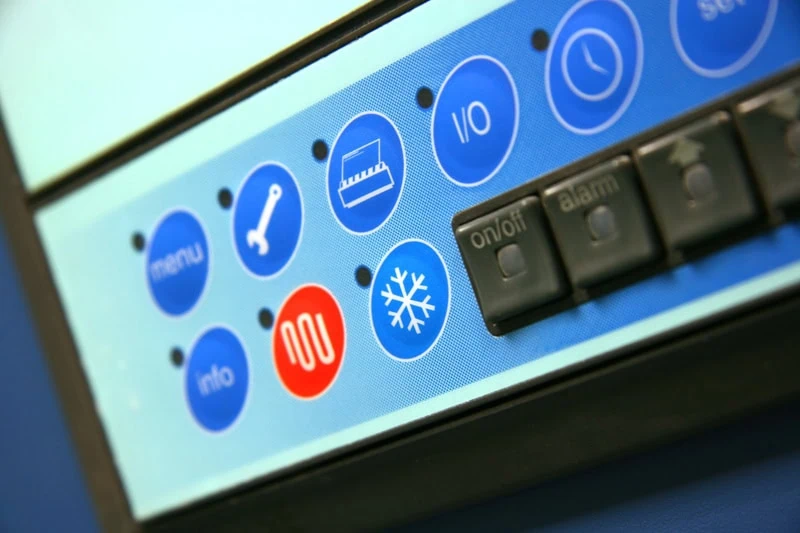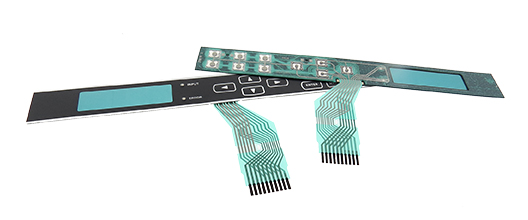Membrane Switches Explained: A Comprehensive Guide to Their Benefits
Membrane layer switches stand for a versatile and sophisticated option for developing user interfaces throughout a range of industries. As industries significantly look for reputable and efficient control user interfaces, comprehending the details benefits and applications of membrane layer changes becomes necessary.
What Are Membrane Layer Switches?

When pressure is applied to the membrane button, the layers make call, completing an electrical circuit. This basic mechanism enables for a vast range of applications, from consumer electronics to commercial equipment. Membrane layer buttons are frequently developed to be waterproof and resistant to dust and impurities, making them ideal for environments where toughness is essential.
Additionally, the flexibility of the materials made use of in membrane switches helps with ingenious styles that can satisfy different shapes and dimensions. This adaptability contributes to their popularity in varied areas, consisting of clinical gadgets, vehicle controls, and home appliances. Overall, membrane switches stand for a crucial component in contemporary user interface modern technology, connecting the space in between customers and electronic systems.
Key Benefits of Membrane Layer Buttons
Amongst the myriad of interface alternatives readily available, membrane layer switches over stand out for their one-of-a-kind mix of advantages. One of the main advantages is their compact and lightweight style, which permits assimilation into a vast array of gadgets without adding substantial mass. This is especially advantageous in applications where space is limited.
Additionally, membrane layer changes offer resilience and resistance to ecological variables. They are usually constructed with products that can stand up to moisture, dust, and numerous chemicals, making them appropriate for severe conditions. This resilience contributes to a longer life-span compared to traditional mechanical switches.
Another substantial advantage is the versatility in modification. Membrane buttons can be printed with various graphics, colors, and appearances, permitting customized designs that fulfill certain branding or functional demands. This adaptability encompasses the variety of layers and circuit options, giving engineers with several arrangements.
Furthermore, the responsive feedback given by some membrane changes boosts user experience, making them much more intuitive to operate. Last but not least, the ease of cleaning and maintenance additionally solidifies membrane layer buttons as a functional selection in both consumer and industrial applications. Membrane Switches. Generally, these vital benefits make them a favored service for lots of developers and manufacturers
Applications in Different Industries
Exactly how do membrane layer switches find their location throughout varied sectors? Their flexibility and capability make them indispensable components in sectors ranging from healthcare to customer electronic devices. In clinical tools, membrane layer buttons are used for their convenience of cleansing and resistance to contamination, making sure health in atmospheres where sterility is important.
In the consumer electronics market, these switches provide sleek, user-friendly interfaces that enhance product visual appeals while maintaining resilience versus deterioration. Automotive applications profit from membrane layer switches over also, where they are utilized in control panels and control board, offering dependable performance in difficult problems.
Furthermore, industrial equipment utilizes membrane buttons for control board because of their robustness, capacity to hold up against extreme settings, and adjustable designs that deal with certain operational demands. The food market leverages membrane buttons for their ease of usage and resistance to spills, making sure operational performance in fast-paced setups.
Ultimately, the adaptability of Source membrane layer switches throughout these diverse applications emphasizes their essential duty in contemporary technology, improving user communication while meeting industry-specific requirements. Their continued advancement guarantees more combination into arising fields and cutting-edge products.
Style and Customization Choices
The layout and personalization alternatives available for membrane layer switches are crucial for tailoring user interfaces to meet particular customer requirements and aesthetic preferences. These buttons can be designed in various forms, sizes, and formats, allowing for seamless combination right into varied applications. The versatility in design implies that makers can develop unique interfaces that improve functionality and keep brand name identification.
Custom graphics, structures, and shades can be put on the surface of the membrane switch, supplying a possibility for branding and customer involvement. Furthermore, backlighting alternatives, such as LED lighting, can be included to view it boost presence in low-light conditions, therefore improving performance.
Functional components can also be tailored, consisting of responsive responses and actuation pressure, which can be gotten used to suit different user interactions. The choice of products, such as polyester or polycarbonate, permits for variations in toughness and ecological resistance, dealing with the particular demands of different markets.
Inevitably, the substantial style and personalization capabilities of membrane switches allow companies to create aesthetically attractive and easy to use interfaces, making certain that their items meet both visual and useful demands efficiently. Membrane Switches.
Factors To Consider for Application
Implementing membrane layer switches needs careful factor to consider of different factors to make sure optimal performance and user experience. Among the key considerations is the intended application setting. Factors such as direct exposure to wetness, severe temperatures, and chemical materials can substantially influence the switch's efficiency and long life. Picking materials that withstand these conditions is critical.

Another essential element is the switch's layout and layout. Guaranteeing that the tactile comments and actuation force align with user expectations improves functionality. Carrying out individual testing can offer beneficial understandings right into the optimum layout.
In addition, compatibility with digital components need to be analyzed. The button's wiring must line up with the total system style, making certain reliable signal transmission and minimizing disturbance.
In addition, production techniques and costs should be evaluated. The selection in between custom-made styles and conventional designs can lead and affect both budget plan time.
Last but not least, take into consideration upkeep and repair work. Membrane buttons may call for certain cleaning and treatment treatments to maintain their look and functionality over time. By resolving these factors to consider, organizations can apply membrane switches that satisfy their operational requirements while offering a favorable user experience.

Verdict
In verdict, membrane switches represent a functional and durable control interface suitable for a large array of applications across several sectors. Membrane Switches. As modern technology continues to develop, the importance of membrane layer switches in modern gadgets stays substantial, offering both functionality and visual allure.
Membrane switches represent a advanced and functional solution for creating user interfaces across a variety of industries.Comprehending the essential elements of modern-day electronic user interfaces, membrane layer buttons are a kind of individual interface gadget that are composed of flexible, thin layers of material. In general, membrane switches represent an essential aspect in modern-day individual interface innovation, connecting the space between users More hints and electronic systems.
Amongst the myriad of individual interface options available, membrane layer switches over stand out for their unique mix of benefits.The design and customization alternatives readily available for membrane layer buttons are critical for customizing interfaces to fulfill specific customer demands and aesthetic preferences.
Comments on “Find Out Just How Membrane Switches Support Touch-Sensitive Applications with Precision”